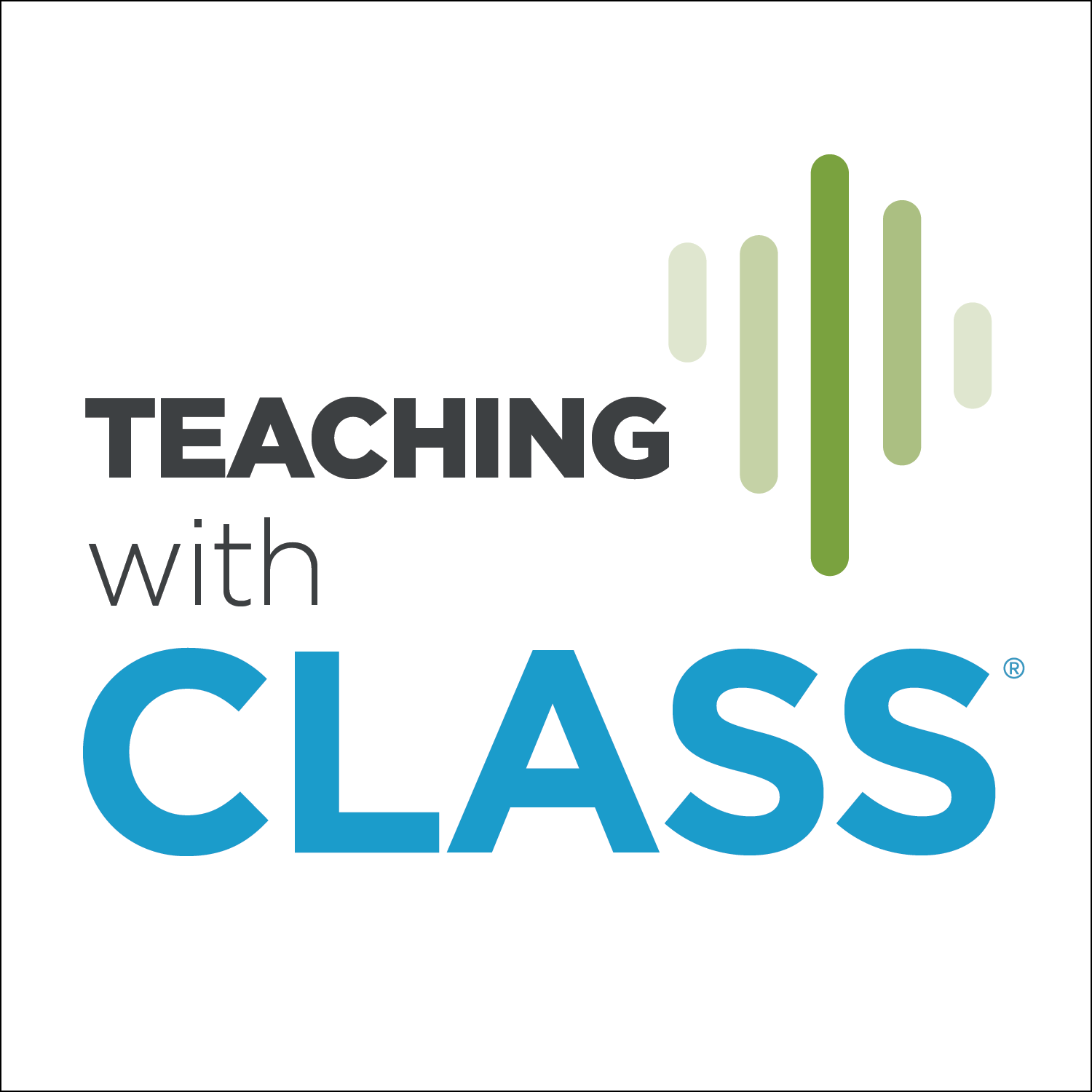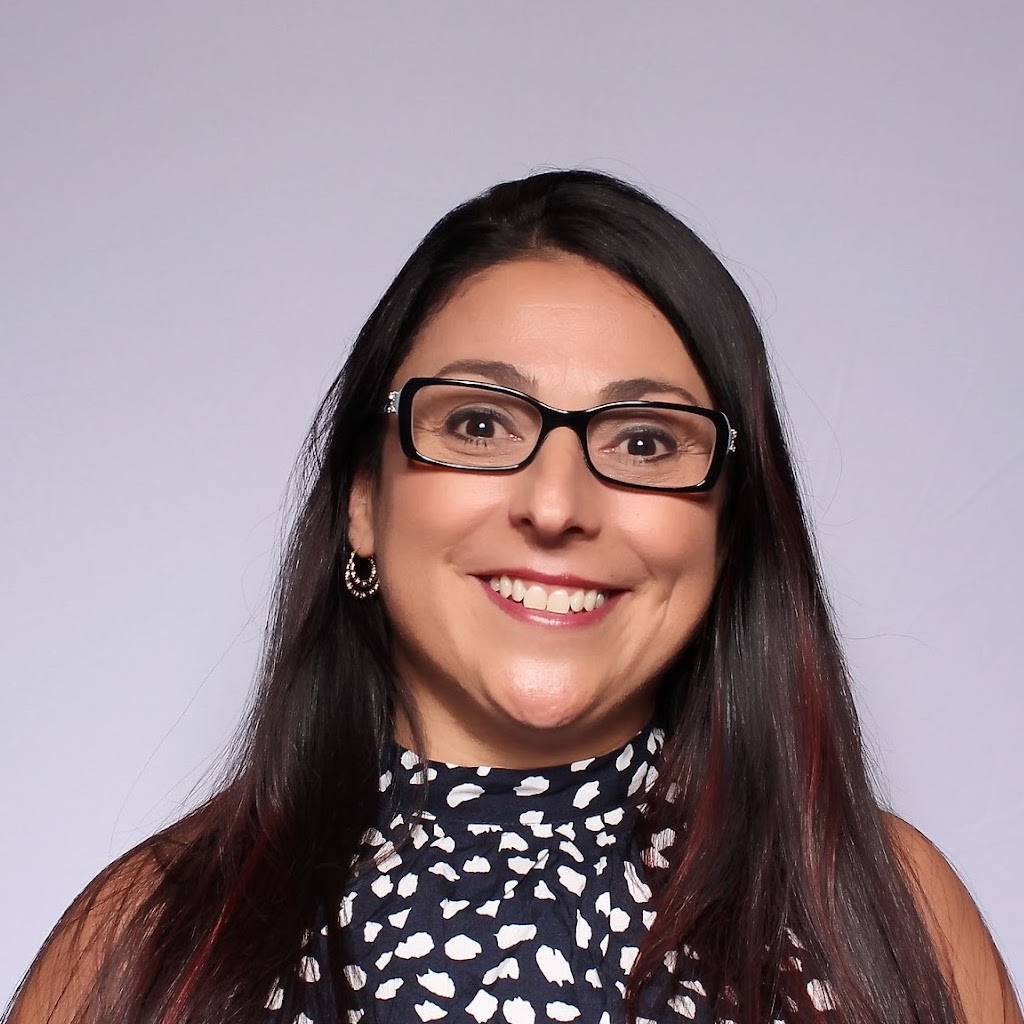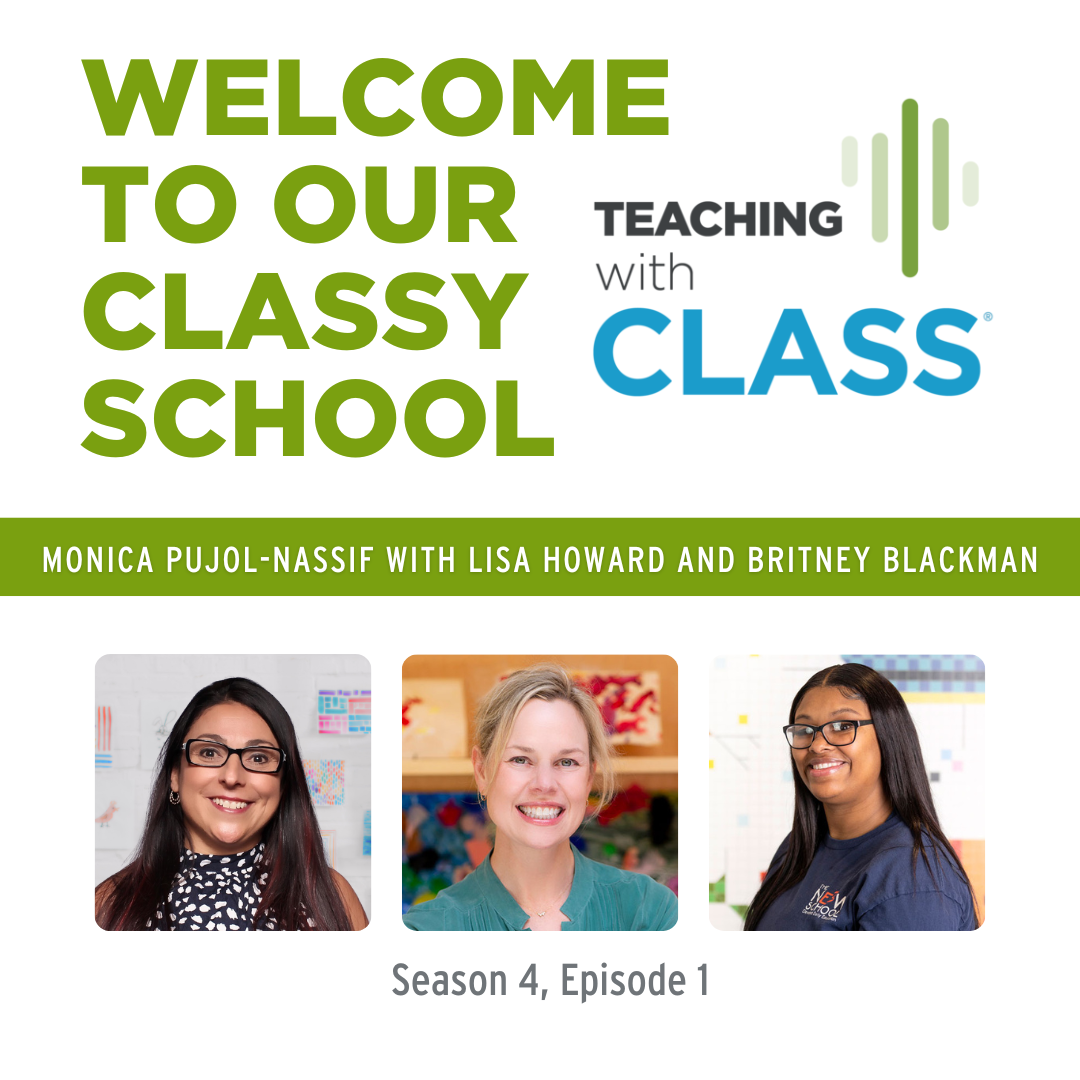Episode Transcript
Kate: Well, hi Judy.
Judy: Hi, how are you?
Kate: I’m really good. I’ve been so looking forward to this conversation with you today. I’m really excited to talk with you about emotional support. This is going to be awesome. Welcome.
The first thing I want to hear is your story. Why emotional support? Where’s the passion for you around that? Why does this matter to you and why should it matter to us?
Judy: Hi. My name is Judy Cuevas, and I have been in the field of early education for 20-plus years now. One of the biggest (I think) factors and most important thing is when we focus on emotional support, we have better rates of children being happier to come to school, as well as we have our staff members and team members that want to participate, take on the team, and work with activities that really impact, so that children are successful, not only in school, but in life.
I think that that’s something that’s so important when we look at emotional support because we all are human. We all have been going through so many different things. It is so important that we really focus on what emotional support is, but especially what it does.
Kate: This is going to be fun. Tell us a little bit more about yourself, your background and all of that.
Judy: I’ll tell you a little bit more about myself and how I learned more about CLASS. About seven years ago, I became a coach, and I worked all over Los Angeles County in a variety of programs—private, for-profit, non-profit. I came about CLASS because I was working with different groups and really looking at the tool.
As a coach, you meet so many people—administrators, principals, senators—different people that you really need support with when we’re looking at learning more about early education, its importance, and the impact that it makes on young children.
I decided to really go back to school and get my master’s degree. I have a master’s in teaching, with a specialization in early childhood education. I’ve been really able to use those tools to really help educators in my role as a coach, as a quality insurance trainer at the YWCA currently. That’s where I am.
Kate: That’s awesome. You’re bringing such a wealth of experience and a real passion for helping educators grow. That’s what we want to talk about today. Emotional support, as maybe a person who’s just starting to talk, to think about emotional support and building it up, someone who’s been working on it for a while, and someone who’s like ready for the expert tips. As a coach, I’m sure you’re going to have a lot of suggestions for us.
To frame everything, let’s pause for a second and make sure we all understand what emotional support is, a working definition that we can keep in the back of our minds today as we’re thinking about all of these things. How would you describe emotional support?
Judy: Emotional support is really about reflecting and taking care of yourself so that you can help others. It’s really about filling up your cup, because when you fill yours first, then you’re able to help others. That’s really where you see the impact. It’s a lot about reflecting, it’s a lot about understanding, and really using empathy. When you’re working with families, with children, with your colleagues, that’s what social emotional support really is.
Kate: We’re finding those ways to support, connect with others, that empathy thing. In terms of a real technical definition of CLASS; emotional support is a technical term in CLASS. Also, we would talk about positive climate, regard for child perspectives, and—
Judy: Educator sensitivity.
Kate: Right, all those things. We’re talking about classrooms, like how would you describe that? A classroom that has really amazing emotional support, what are the things we see happening?
Judy: A lot of things that I see as a coach when I come, observe, and I see is high quality interactions where teachers are smiling, they’re happy to be in their environment, children are taking leads, they’re part of the conversation, they’re engaged in that conversation, they have roles that they play. Very, very important roles into the classroom.
Also the children are engaging amongst each other in positive ways, helping each other, working together in doing things. I look at those things, but also something that’s very key is really understanding the cues that the children are giving.
After working with children for so long, teachers will tell me, I feel—I could just see it in their eyes—they didn’t understand that. Maybe it’s rephrasing something in another language that’s common for that child or that that child understands. Maybe it’s a gaze in the eyes. Maybe it’s between coworkers where you can just look at them, maybe a flag or a signal that, hey, let’s support this child.
I’m scanning the room. Those are really important when we’re looking at emotional support, because that helps everyone feel safe and it feels like we’re all on the same page working together for a similar goal.
Kate: Those are all the keywords we like to remember when we’re thinking about emotional support and with the CLASS tool. We want to talk about connection, warmth and connectedness, children feeling safe and secure in their environment, knowing they can depend on their educators that are there, all the adults to take care of them, and also that they are really important and valued in that classroom. Everyone’s getting this really warm feeling where their needs are being met, and that cue thing you were talking about seems really important in that way too.
This is what I’m thinking about because we were saying we want to talk about maybe a teacher who’s just starting out and thinking about emotional support, a teacher who’s been trying this for a while, and someone who’s really ready for those expert tips. Where do cues and recognizing children’s cues fit in there? If I think about that and think about where I am as a teacher, what do I look for?
Judy: I think even when you’re starting off, I like to think of myself as starting off always because I’m constantly learning. As I work with children, as I work with families, as I work with administrators, it’s really about looking and reading body language.
Are we projecting that we’re welcoming? Do we have our arms crossed when we speak to others? Are our arms open? Where is our body posture? Because that’s the message sometimes that we reflect. We can see children reflect that same message.
In the beginning, for a beginning teacher, I would always suggest that really looking at your feelings, how you feel, how you communicate, that’s really going to be the cue that you’re seeking.
Also, when you’re looking at the children, do you notice anything in their face? Their eyes? Do they look confused? Are they smiling? Really looking at that match affect. When they’re speaking to us, are we giving them the same response back? Are we curious about what they’re doing? Are we wondering how we can make it better? Those are some of the things.
I think for teachers that have been in the field a little bit longer, we’re just revisiting those steps. We want to say, as you’re working with families, always remembering your body posture, what that looks like. Are your arms open? What is your tone of voice? How can we make that more warm, more welcoming? Looking at how we can smile more when we’re introducing things.
Even if you notice that the children are confused, can we take a deep breath and say, ah, I wonder. Well, it can happen, or I wonder how you’re feeling, or I wonder what’s happening. Taking those steps is really important, but I think it really starts with us taking a deep breath, reflecting, and then looking at some of those cues that can really impact the work that we’re doing.
Kate: Busy teachers have a lot of challenges to have that moment to pause and reflect. In the midst of the busy, busyness of the classroom. I can see how starting first by recognizing where I am at? Am I seeing, am I recognizing where children are at, and be a mirror, have that empathy thing happening.
That might be all a new teacher can manage because they’re juggling so many other things. Maybe that building self-reflection is something to work toward so that you can be more responsive in the moment to children. That cues, that’s a big one, definitely, and the self-reflection.
As a coach, how do you support a teacher to be self-reflective like that and notice where the children are and where they are. What would you suggest?
Judy: I think first it starts with myself. I have to be a reflective person because you know as leaders we have to start from the top. One of the things that we can do is always be reflective. Asking ourselves, when was that hard conversation? What was I having? What is keeping me away? What were my feelings towards talking to a teacher?
The more I practice it myself as a staff member, as a team member, the better it is for me to show that behavior, so that others can do it. I can’t just preach it, I have to show it.
So what I do is I start with myself first. Second, I ask the teachers. This is where we have to have these words like, sometimes it’s going to be a hard conversation. We have to say, and starting off with this, the key phrase I always start off with if I know it’s going to be a hard conversation, just saying, this is a hard conversation for me, naming it. Then starting from there and saying, I noticed maybe some frustration, or maybe can you tell me what was the hardest part of your circle time? Can you tell me what was the hardest part of the morning transition or of your day? What are some areas that you feel you need support with? And guiding with these open-ended questions to allow people to reflect.
It’s about building that relationship. The more I do it and put it into practice, it’s easier for others to follow and to allow them to reflect. So starting off with what was hard about today? What was something that you felt I needed more support with? What are some things that you would like to change? If you could do this again, what would you change? There’s always room for that to grow.
Sometimes teachers will say, I wouldn’t change anything. I think this is a good experience. I’ll say, okay, so if you share with me again, if you were to do this again, or you were to extend this activity, what are some things that you can change? Because we have to provoke thought, higher order thinking.
If you could do this again, if you were going to do this outside, how would you change it? How would you change this activity? How would you do this differently? Because there’s not one size fits all. It’s really about building that relationship to have more open-endedness so that we can share and connect.
Kate: It’s like, how do we filter out all the static and be present to the children and noticing things, noticing ourselves, and then addressing the emotions. Finding out, like you were saying, being curious about the emotion. As an adult with a child, finding out too, oh yeah, there’s something going on here. This child’s having some emotional reaction, and connecting with the child in that way to help, like you’re saying, build relationships, help the child feel seen and supported.
When I’m doing that as an educator you mentioned having my cup full because I can see how being there for children in this way, being self -reflective, and really is pouring out that cup a lot to others all day long. I can tell that’s a really important part of this emotional support process. What else would you add that you haven’t mentioned yet about how to build emotional support in a classroom?
Judy: I think it’s about setting the scene. It’s about when you come in, is this environment feeling warm and inviting? Am I feeling invited as a child? It’s about that curiosity. Sometimes I like to step back and sit on the carpet myself and look at if I was a young child, what would I see? What does that feel like to me?
It’s a little bit about that wondering. Where are the spaces where I can go when I feel overwhelmed? Where can I go in my classroom where I can take a deep breath? Because also as educators, we have to look at those spaces ourselves and we have to visit them ourselves so we can help the children go there when they need.
When they go there, what activities are they doing? Do we have posters that share how to take a deep breath? How to do a countdown? Do we have some toys that are in there that are soft and that we can hold? Do we have some books in there that help me reflect with my feelings and emotions? Do we have social stories? Can I look at pictures of my family there to help me reconnect and feel happy? I think those are really really important.
I find sometimes children start to decompress during nap time. If we do a full day and you see sometimes tears come out, they think you know anxieties of the day or things like that. I always like to remind the children when I’m helping them with a nap time, what made you so happy today? What are some of those things?
I think as educators ourselves, what’s something that’s making us happy right now? It can be a simple walk. It can be getting one thing done on our to-do list. It can be visiting those areas where we get to decompress and do those things. That’s one of the ways I think is really important.
Kate: So the environment plays a big role. As you were talking about that, I was thinking about setting up my classroom for the new school year and thinking, let me sit down on the floor. Like you’re saying, take stock of what the setup looks like from their perspective, from that lower down perspective? And where are the quiet spaces? Where are the spaces where I’m going to spend time with friends? Thinking about that during the classroom setup, beginning of the year time. That environment plays a big role.
On that train of thought, you were talking about setting the stage in the physical environment. If I’m approaching the new school year and I’m thinking about how to set up the emotional support environment, in those relationship ways, how can I start the year off in a good pathway for that?
Judy: One of the things I find very important is really having areas. Not just one, not just the book area, but a variety of areas where children can go, stop, and pause. Educators are self-right as we work with our team, but what are some of those areas?
Maybe it’s a space for one or two friends to be in that has pillows. I encourage all teachers to have those areas, a couple of them in the classroom as many as you can. I know space sometimes can be limited, but having a couple of those places where children can pause and take a deep breath.
I also encourage that highly outdoors. Sometimes I know we think about the indoor classroom, but we don’t always think about the outdoor classroom. Where are those areas outside? I always tell teachers this, and this is where we start, a tip, as you know, we’re starting off for the beginning of the year.
I like to think about how sometimes the malls during the holidays are extremely busy. Sometimes I look at the line and I’m like, I can't. I have to walk away. I need to go back to my car. I’ll order something online. And I think about it in the classroom. We’re not all meant to run in packs. We need areas and spaces to decompress, to take in information, a space to pause, a space to reflect. So where can children do this in the classroom indoors and outdoors? Where can they go?
We encourage them to have these safe spaces that we created, that are focused on taking deep breaths, are focused on helping our friends that are transitioning maybe into the classroom or out of the classroom, things of that nature. Where can we have those spaces?
I always like a couple of areas. It doesn’t have to be only one. I don’t encourage it only to have books. It should be a variety of things because children do need a pillow, toys that are soft. They also sometimes want to use magnet tiles in that area but it’s a space for one or two friends, and it’s really about being intentional, thinking about those areas as you create them, indoors and outdoors.
They’re also teacher-friendly. If you have a substitute that comes in that day because this is sometimes what happens when we work in classrooms, or other teachers or administrators that they feel welcome into those spaces, it’s a space you want to join. It’s a space that feels cozy, and the colors in that environment.
Kate: It’s more realistic to think that there’s probably more than one person at a time who needs a moment to decompress, or a moment to just have some quietness. We all have different levels of activity and how close we like to be with another person or how far away, and all those different things.
As I’m welcoming my new students to the school year, what are some ways that I can connect with them and start building that relationship?
Judy: Sometimes I hear a lot from the teachers. We have just been through a pandemic and we see that a lot of the children are coming back with maybe challenging behaviors, maybe some language, things of that nature. How can we include everyone when we’re thinking about that?
One of the things that I always talk to teachers about is having a feelings board outside. As they’re coming in, even parents can help with something very simple, like how are you feeling today? It could be different emotions and they can attach that to their name because that gives me insight about how their day is.
Maybe they woke up in the night, maybe they didn’t sleep well, maybe they’re coming from mom’s house to dad’s house. There are so many things that are very impactful. But if I have more insight, it’s easier for me to help them and understand where I can be of service to the children, and to even my colleagues.
Even just telling me today, quick, something as easy as when you meet with your colleagues, or a team as an administrator saying, are we thumbs up or thumbs down? How are you feeling? And it just gives us the temperature of the room.
I think that’s really helpful because then we’re able to help adults. But for children, how can we do that? Can we say like, I know there are very popular pictures that have a happy face, a sad face, surprised face, angry. They can select, and those things can change throughout the day.
You can move it around so that they can move like I was happy, but then now I was sad because I didn’t get my trike. But you know what? Maybe I'll feel this way later on. Our emotions change as we go out through our day. We should have opportunities for the children to do that.
I know something that’s very popular too is that often, families or teachers will ask a question of the day, revolving feelings, like how was your child’s night? Tell me something that makes them happy. Tell me something that makes you sad.
Families, as they’re walking in, dropping off their child, they might just take a quick survey. Then at circle time, morning meeting time, they’ll discuss some of the answers just to get that climate check. What is that really looking like? And those, I think, are really positive ways.
Kate: And that idea that how you arrived this morning was this morning, and that might fluctuate throughout the day. Revisiting that check-in is probably helpful for a lot of us. That’s a great idea. The morning check-in isn’t just for morning, it’s for any time throughout the day.
What you were saying about, maybe think about, so we asked her now, how are you feeling? But do we go deeper? Do we say, why? How come? What was happening that’s bringing these sad or angry feelings to help them identify not just the feeling, but the circumstance that’s bringing that, getting a little more connected in that way. It made me think, do we ask children why? Or are we assuming? Do we make assumptions about their feelings and things like that?
Judy: I think it’s important like you said, like when we ask them why. If in the morning the parent fills out that question with their child, revisiting that question during the day, like I noticed daddy said you were feeling a little sad in the morning. I wonder how you’re feeling now. Why were you feeling so sad?
Maybe during morning circle, does anybody want to share what they said when they were being dropped-off? What changed? Those kinds of questions. I noticed you have a smile on your face. I wonder what’s making you happy. Sharing those times. That would really help children understand their own feelings and be able to work together. Also it gives us insight really into their day and how we can be of support to them.
Kate: Yes, because our feelings change, our needs change, and being present with them and aware of what’s going on so that we can respond. Not just think, they came in like gangbusters this morning or whatever. Or they came in crying, or they came in super excited. They might not feel that way all day long.
Except that, children’s emotions fluctuate just like ours do in helping them understand their fluctuating emotions too, helping them gain that awareness. That is super awesome.
I’m going to wrap us up. I’m thinking about one beginner tip, one thing-out-of-the-wild tip, and one super expert tip, that you might want to leave us with. If people took one thing away as a brand new teacher or a teacher who’s been at it a while or an expert teacher, what’s one thing they could try at the start of the new school year?
Judy: I believe at the beginning for a beginning teacher, one of the things that I would really suggest is coming in with curiosity, being able to explore, and understand that you don’t have to know it all, but being really leading with intention, looking at what are some of those places that you can approach positive climate? How can I learn more about the children in curiosity when we look at educator sensitivity?
And also remembering that you and the children are working together. It’s a team. Those are some of the things that I would do when you’re starting out, really looking at your classroom, really understanding as a beginner teacher, and take it slow.
The best thing about education is that and working with children is that we’re learning. They’re learning and we’re learning. We strive every day. I think that’s something really important with the basics.
Kate: Those are the basics. The basics are to stay curious and stay open. Okay, I’ve got that. I’ve got that. I’m keeping my curiosity. I’m staying aware of children. What do I do now?
Judy: Now that you’ve got those things down, I think it’s very important to do self-reflection a couple of times a day. I encourage it as much as you can, but at least a couple of times a day. Asking simple questions. What went well and why? What would I change if I could do this again? And then what would I do differently? How could I help somebody else? Or what was my big takeaway? I like to say, what’s the hashtag of that moment?
Kate: If you’re going to hashtag it, what would it be?
Judy: Yeah, what would be your hashtag of that moment? And naming it. I think that’s really important. Now that you got those things down, really focusing on those things, where can you reflect, grow, and better understand.
Kate: That’s great. Is there something even more advanced than trying to be self-reflective? That’s a pretty tall order for a busy teacher.
Judy: Yes, but I think that when you name it something really quick, it’s easier to tackle things down like, that was hard. But I could do it again like this. Something fast. It doesn’t have to be too long. I think even just understanding the reflection process is half the battle.
For the, I want to say the novice teachers, the ones that have been here for a while, I think it’s putting that into practice as much as you can. Modeling the behavior we want to teach is super important, but also what can we learn from this process and what are we learning from the children?
Even though we create the spaces, even though we’ve worked with these families, even though maybe we have recurring siblings. What else could we learn? What else can I gain? Is there a book I can read? What else can we do? And maybe some of it has to do with self-care. Maybe some of it has to do with reading more about strategies. It’s more about now I have information, where do I move from here?
Kate: That is amazing. I always ask this. You’ve been speaking from the heart this whole time, so I’m not sure what else you could say, but I always want to ask our guests. If you could speak directly from your heart to the heart of an educator listening today, what’s one important message you would want them to know?
Judy: I want to say to all the educators that you are so valued. The impact that you make on these young children and children in general, our students is the most important. The more we focus on taking care of yourself and your social emotional well-being, the better education will be where we can help children, families in our community, not only be successful in school, but in life. That’s the most important.
Kate: That is amazing. Thank you so much, Judy.
Judy: Thank you.
Kate: This has been such a wonderful conversation. I know people are going to take away a lot of great ideas, where they can start, and how they can grow. Thank you so much for your time.
Judy: Thank you. I’m really happy to be here and thank you for sharing with me some experiences, and also allowing me to share my experiences. It has been an amazing time. Thank you.
Kate: Thank you.




